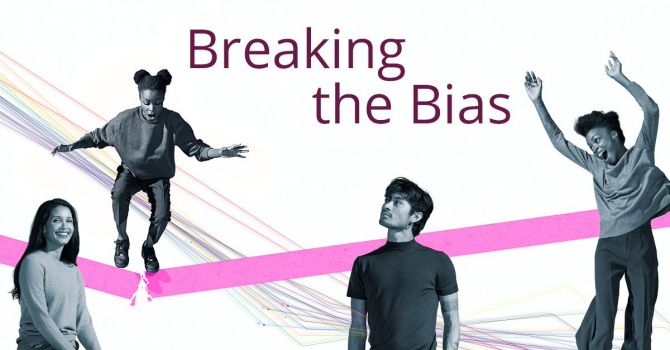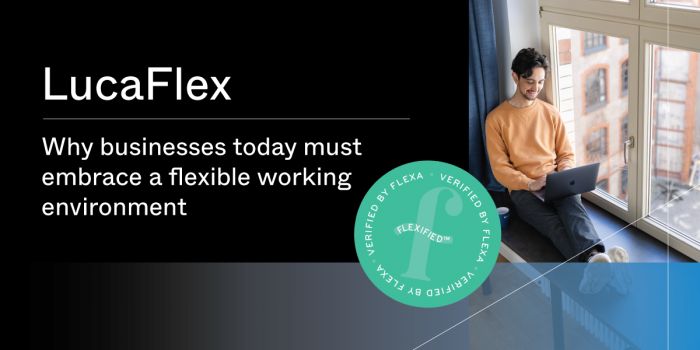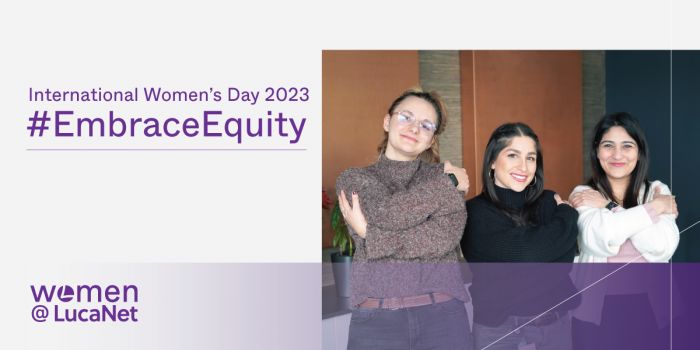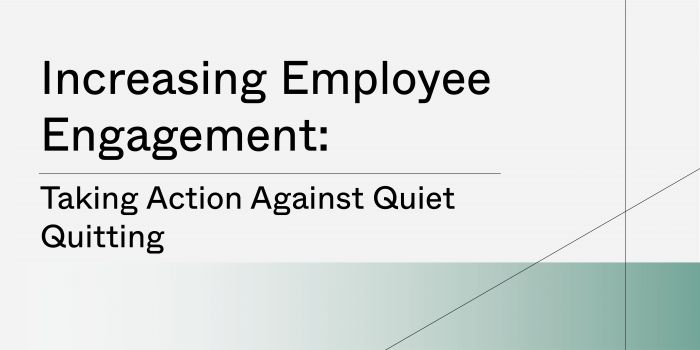
Step by Step to your Diversity & Inclusion Strategy

The business case for DE&I has never been as strong as today. Critical to establishing Diversity & Inclusion as a cornerstone and achieving fundamental progress within an organization is a strategy that considers your goals, mission and how to get there. Strategy processes are always a challenge. That’s why we want to share with you the most important steps in creating our D&I strategy.
As a globally operating company we are proud of the diversity of our people at LucaNet. It has always been one of our major priorities to create a workplace where everyone can feel a sense of belonging and contribute to LucaNet's success. Our mission to simplify finance is powered by our global and diverse team of unique talents, customers, and partners. Our vision is to create an inclusive work environment, where everyone can thrive and thereby contribute to building a fairer, more inclusive society.
In past years Diversity and Inclusion in business moved from ‘nice to have’ to being acknowledged as a driver for sustainable growth and many organizations have made significant efforts to diversify their workforce yet developing and implementing a D&I Strategy might still seem overwhelming. That’s why we decided to share some insights of our journey at LucaNet so far – and yes, it is important to remember that it is a journey, a long one. But we are positive that with taking a few, even small, but always well-thought-out steps it is possible to set an organization on the path of meaningful progress.
Ensure buy-in
Top-down executive support for driving D&I efforts is invaluable. We have witnessed how powerful it is to have our Executive Board behind our goal to build and implement a D&I strategy at LucaNet. However, we know that our experience may not be the norm and that it’s not always easy to get the executive team’s buy-in. To get the support and resources needed you can:
Leverage research - showing that D&I is a growth generator, and that bias is real. Example:
Research from Mckinsey showed that gender-diverse companies are 15 percent more likely to outperform (have financial returns above their respective national industry medians) non-gender diverse companies, and ethnically diverse companies are 35 percent more likely to outperform.
Without diverse leadership, women are 20% less likely than straight white men to win endorsement for their ideas; people of color are 24% less likely; and LGBTs are 21% less likely (HBR).
Include Stories from employees – sharing real experiences from people the leadership knows on how they have struggled with a non-inclusive workplace and society can inspire leaders to act.
Come prepared and with concrete support requirements – after making the case for D&I make sure that you know what you’re asking for in terms of support, leadership visibility, budget, and resources.
But in addition to the leadership support, it is crucial to get buy-in from employees, otherwise your impact on D&I in the workplace will be limited. Our experience is that interdisciplinary focus groups, surveys and support for D&I initiatives are very helpful. It is essential to report on the results as well as on the implementation status on a regular basis and to share this information with the team – in our case through our intranet and our monthly and bi-annual townhall formats.
Do a diversity audit for a materiality assessment
An essential step for us that we highly recommend was a Diversity & Inclusion audit that we conducted supported by an external consultant, Olla Jongerius of BeamReach. Together with BeamReach we followed a four-step process: Discovery call, interviews (1:1, focus groups), internal assessment (variety of materials and policies), and data gathering. For our analysis we used the GDEIB Model, an internationally recognized framework for a diversity and inclusion assessment and performed a SWOT analysis resulting in a scoring regarding the most relevant dimensions for our organization.
Having clarity based on an established framework regarding our D&I efforts, being able to position ourselves, identify and prioritize the dimensions that are essential to us was crucial to raise organizational awareness on D&I and develop a tailored strategy for LucaNet. But after the first audit is basically before the next: continuously collecting the right data to capture the diversity of our workforce and measure progress remains an ongoing task.
Develop your D&I strategy roadmap
Based on the audit results and input from employees and leadership, we developed our D&I strategy. It includes a vision statement and comprehensive roadmap with a number of initiatives defined across four pillars:
Leadership accountability – in the leadership pillar, LucaNet aims for its leaders to be committed to accelerating inclusion and breaking biases.
Inclusive workplace – in the workplace pillar, LucaNet aims to be an inclusive workplace for everyone, to embrace their uniqueness and bring their whole self to work by challenging internal processes, structures and improving our own mindset.
Customers & Partners – in the customers & partners pillar LucaNet aims to engage in an inclusive ecosystem to maximize value for our customers and partners globally.
Social responsibility – in the social responsibility pillar LucaNet aims to own our shared social responsibility and act exemplary for a more inclusive and respectful society.
We are dedicated to building an environment of belonging where everyone feels respected and valued, breaking down biases and barriers - both internally and externally.
With the planned initiatives, which range from the revision of the recruiting process, employer brand, our performance management to employee training, we are convinced that we are taking a major step in this direction. Critical to an authentic D&I strategy is that it focuses on the issues and challenges that are material to your organization and your business. This is where the status quo and materiality analysis in advance is essential.
We will report the progress towards the commitments of the strategy on a yearly basis in our D&I Report first published in 2022. Of course, our D&I strategy is not static but rather an on-going process. Creating the inclusive workplace that we have defined in our vision will not only require implementing a few initiatives but rather nurturing our company culture and relationships over time with the contribution from all employees and leaders.
As we will keep this D&I conversation going as a part of our organization’s development, we promise to share further insights along the way. We are happy to hear your experiences and challenges, feel free to connect if you want to share!






